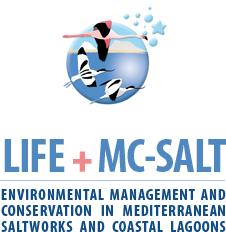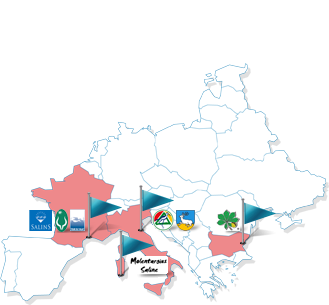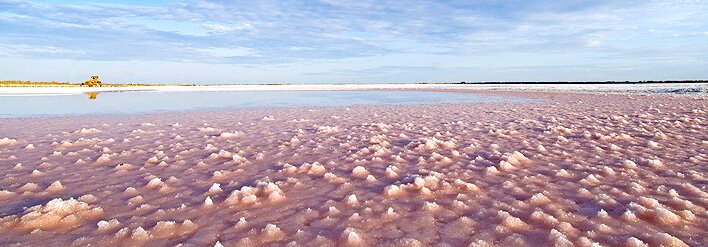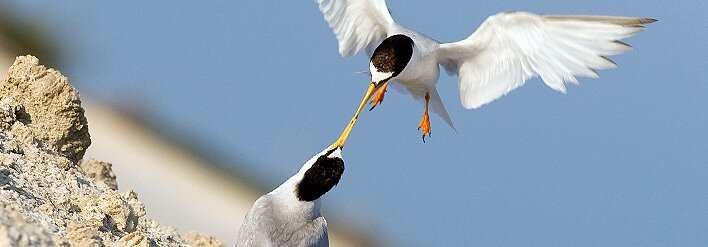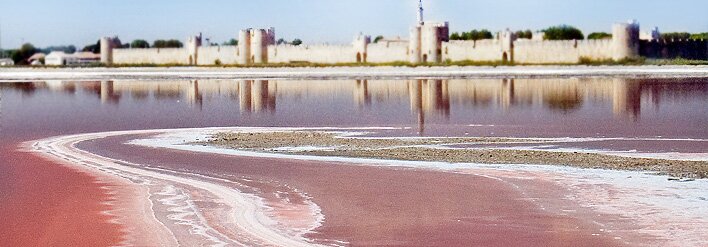Summary of the project
Environmental Management and Conservation in Mediterranean saltworks and coastal lagoons
Actions and means involved:
The present project origins from the results of LIFE00NAT/IT/7215 on Comacchio salt work, which clustered together Natura 2000 sites’ managers who are currently facing similar conservation issues. As a matter of fact the common characteristic of the 10 Natura 2000 sites involved into the project is to host a salt work. Furthermore the hosted salt works are in a range of different salt production status, ranging from production interruption 25 years ago to still fully productive. In Molentargius site (Sardinia, Italy) salt production was interrupted 25 years ago, in Camargue (Provence Alpes Côte d'Azur and Languedoc-Roussillon, France) salt production was interrupted last year, in Comacchio (Emilia-Romagna, Italy) salt production was interrupted for 20 years and it has been restored in 2004 just for conservation purpose (to maintain salt gradient), in Cervia (Emilia-Romagna, Italy) salt production is still in use but artisanal, in Aigues-Morte (Provence Alpes Côte d'Azur and Languedoc-Roussillon, France) and Pomorie Lake (Bulgaria) salt production is still fully operative. The project proposal has been arranged after two workshops, one of which shared in video-audio conference, among partners and lead to apply the restoration method of LIFE00NAT/IT/7215 in other sites, but also conceived a new method.
The habitat 1150* Coastal lagoon is present in all salt works, and water circulation is artificial, the water circulation is necessary for a good conservations status of the habitat and salt productions, both for conservation of halophilous habitat and species and commercial purpose. But considering the cited range of different salt works condition the methods involved for habitats conservation will be two. The first method will involve sluices restoration, embankments restoration and dredging channels, as experienced in LIFE00NAT/IT/7215. The second method conversely involves the restoration of more natural drainage at “Ancien Salins de Beauduc“ in Camargue, where the water supply was previously artificially guarantee by a pumping station dismantled in 2009 with the interruption of salt production. To have natural drainage is necessary a topographic re-shaping to recreate condition for the colonization of coastal habitats such as 1310 Salicornia and other annuals colonizing mud and sand; 1410 Mediterranean salt (Juncetalia maritimi) meadows; 1420 Mediterranean halophilous scrubs (Sarcocornetea fruticosi); 1510* Mediterranean salt steppes (Limonietalia). The two different methods will be involved because of different initials conditions. As a matter of fact the Camargue site is huge, something like one order of magnitude bigger than the other sites, and the area interested has no inhabitants. Comacchio, Cervia, Molentargius, Pomorie and Aigues-Morte salt works are surrounded by cities or very close to cities. The restoration methods that will be implemented in Camargue represent an example of climate change adaptation project because into the area restored the coastal erosion rate ranges from 7 to 10 meters per year.
For the conservation of habitat 92D0 Southern riparian galleries and thickets (Nerio-Tamaricetea and Securinegion tinctoriae) and 2120 Shifting dunes along the shoreline with Ammophila arenariae will be necessary mechanical removal of invasive plant species, in particular Amorpha fruticosa, Eleagnus angustifolia, Antirrhinum majus and Spartium junceum. The presence of these invasive species affects the conservation status of typical native plant species in Pomorie like Eryngium maritimum, Cakile maritima, Medicago marina, Silene thymifolia, Stachys maritime and Trachomitum venetum.
For the conservations of the birds targeted species the means involved will be both restoration and ex-novo construction of breeding sites and mitigation of disturbance from Larus michahellis. Disturbance for Sterna albifrons in Camargue is also induced by human presence and dogs, this disturbance will be avoided through fencing the perimeter of breeding sites. Also in Aigues-Mortes will be constructed bird hides to prevent general human disturbance during guided visit. The mitigation of disturbance from Larus michahellis will involve different methods, including scaring with a mechanical “scarey-man” with timer, the arrangement of the use of a grid of cable of size suitable for Charadriformes but not for L. michahellis up to the use of alphachloralose bait (with authorization).
The specific partnership of the project, which involves protected areas managers, a private entity and a scientific foundation will largely facilitate dissemination of the projects’ results.
The networking action will be also used for the dissemination both of the management model of Mediterranean salt works and Guidelines for L. michahellis disturbance mitigation.
event calendar
-
05
Dec -
14
Dec -
-
-
15
Feb -
27
Nov -
15
Oct -
29
Jul -
11
May -
25
Mar -
01
Jan -
26
Feb -
02
Feb -
28
Apr -
20
Oct -
09
Oct -
26
Jun -
17
Jun -
26
May -
19
May -
07
Nov -
03
Nov -
27
Jun -
09
Jan -
24
Jan -
05
Dec -
21
Oct

